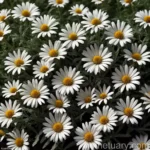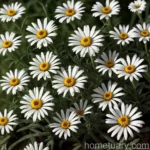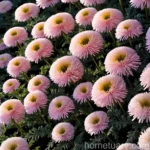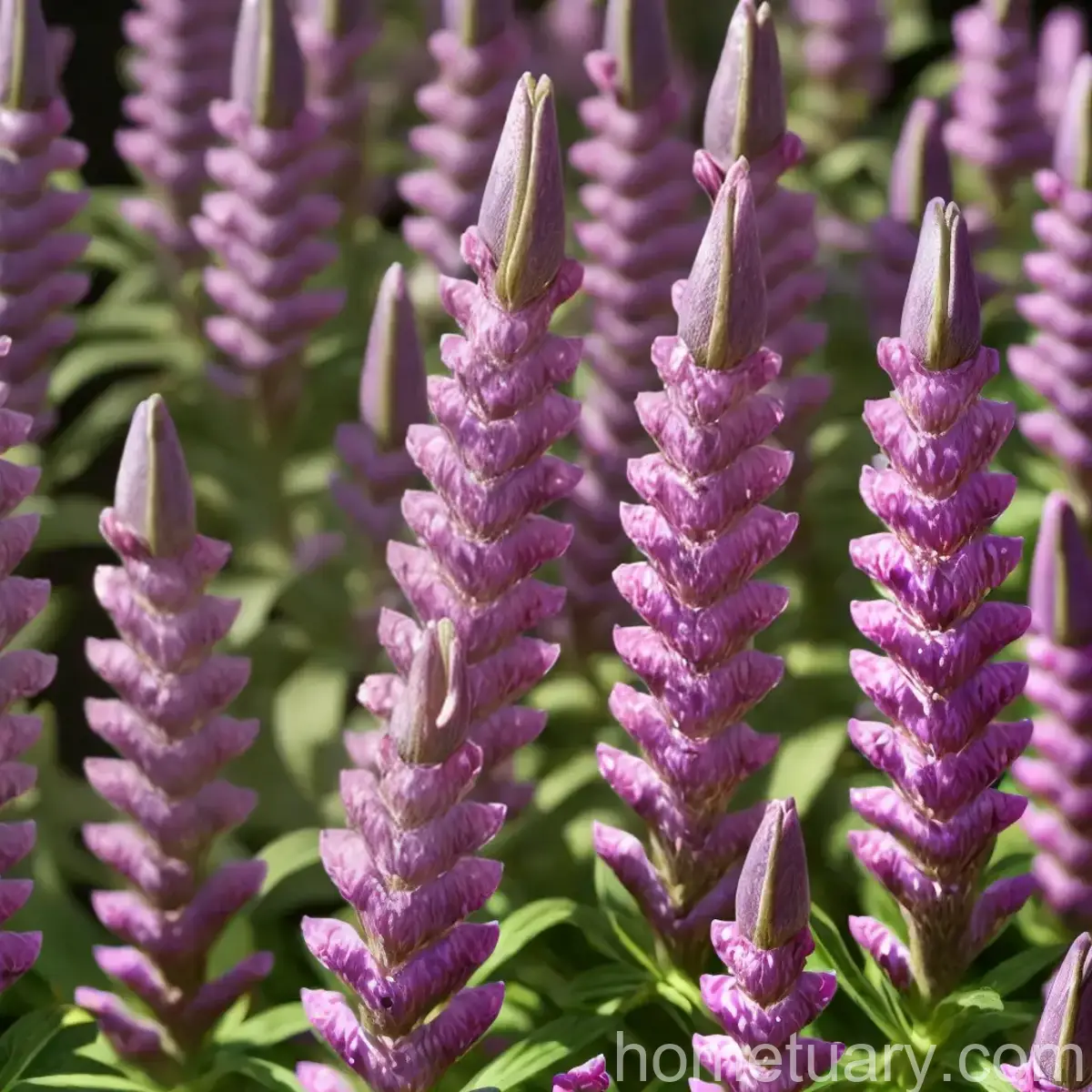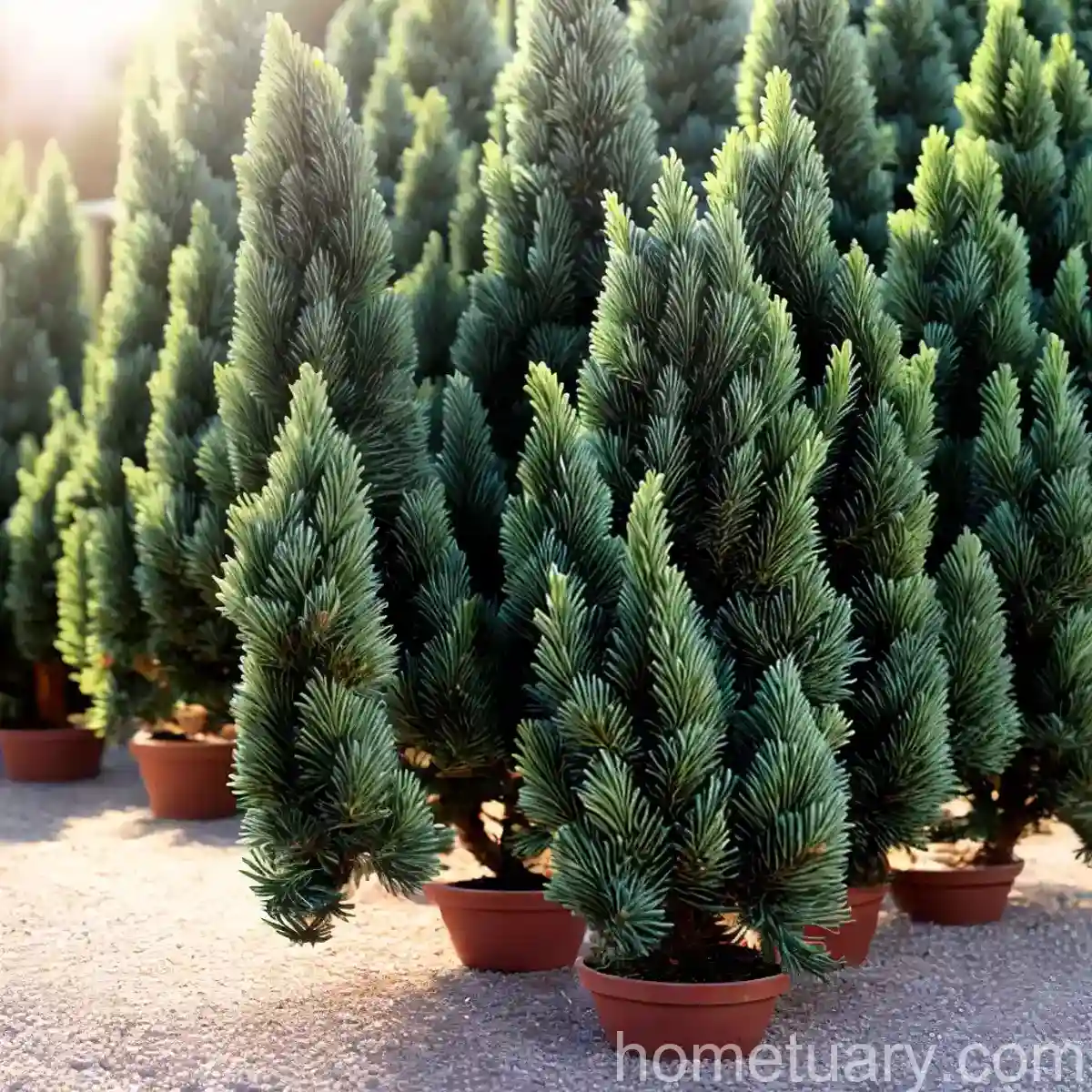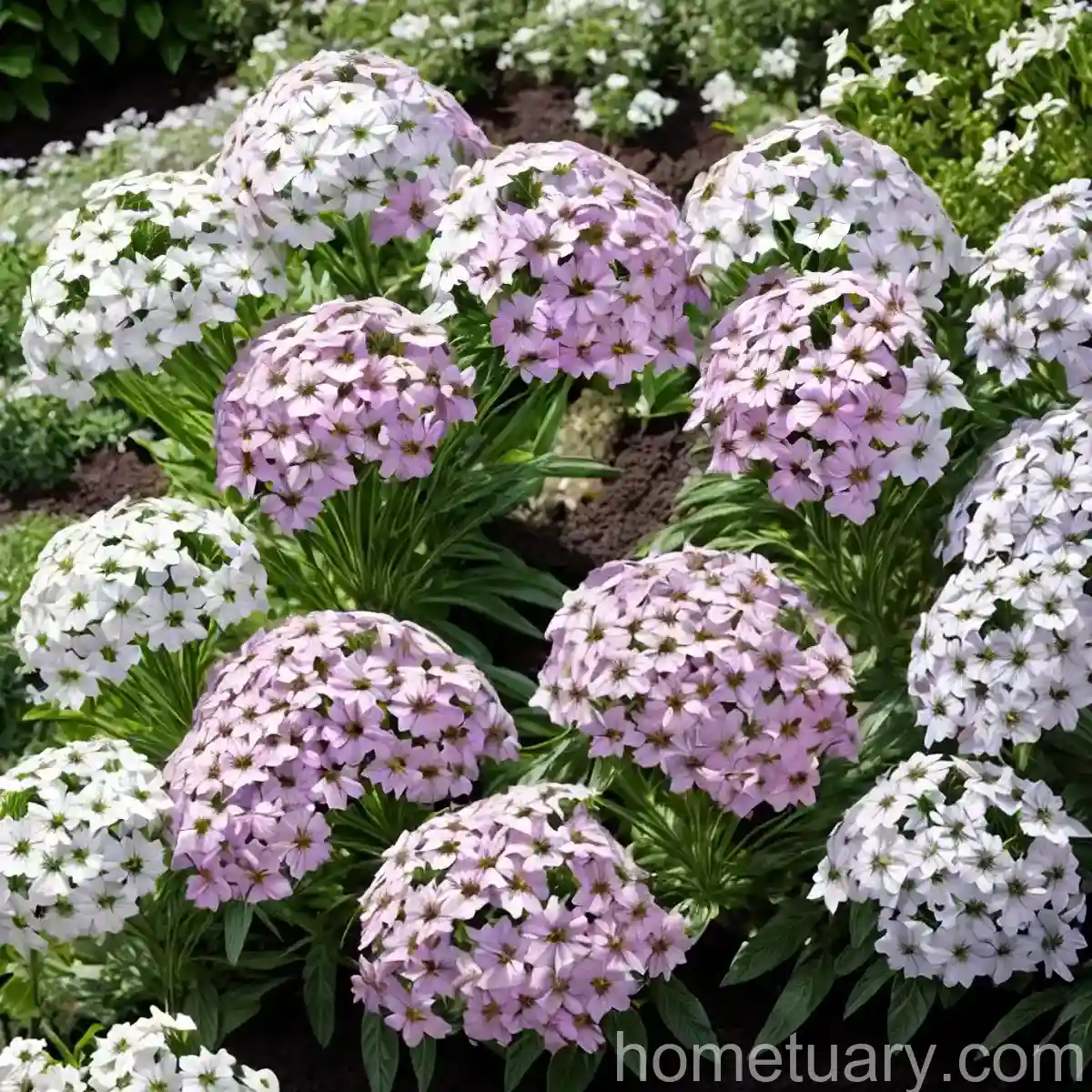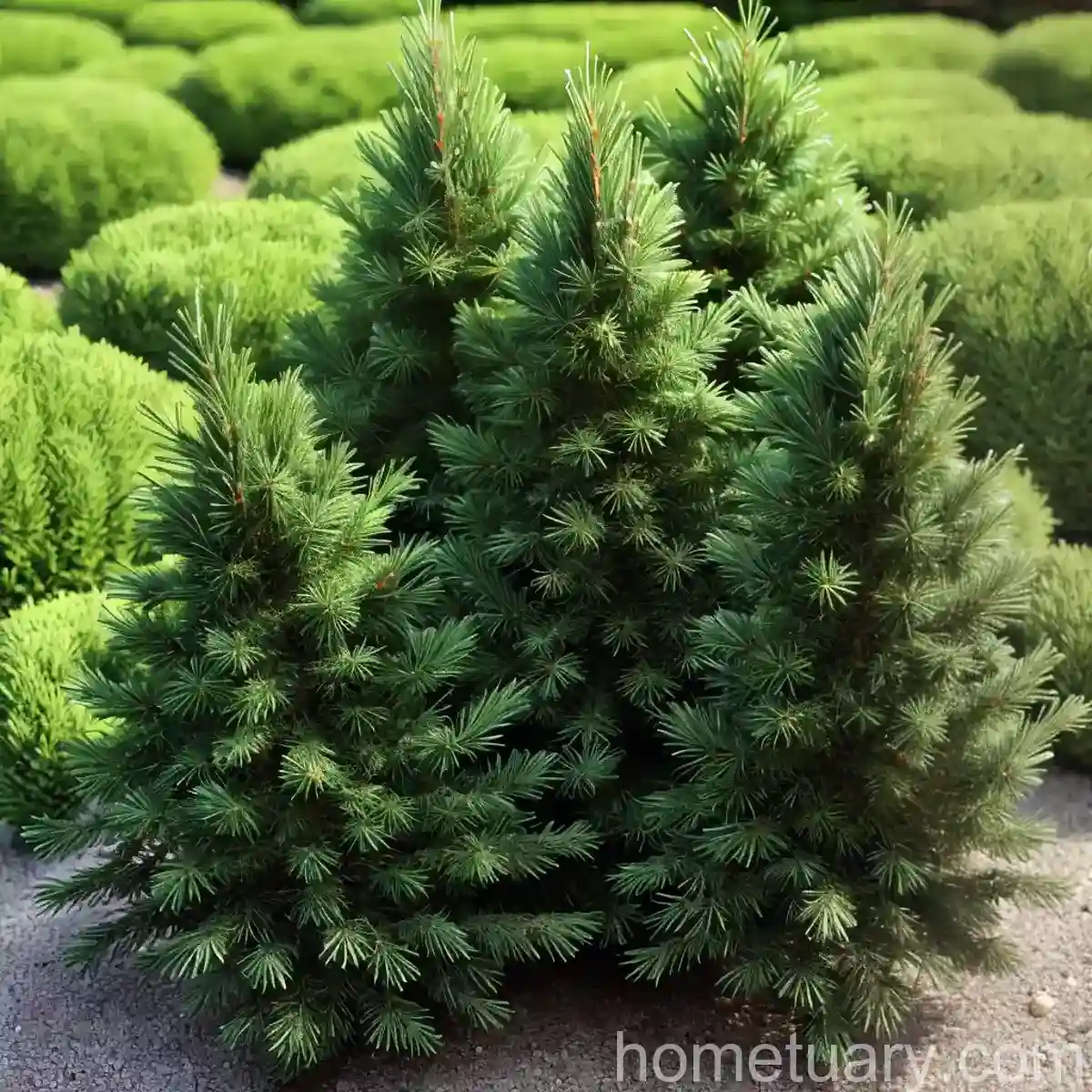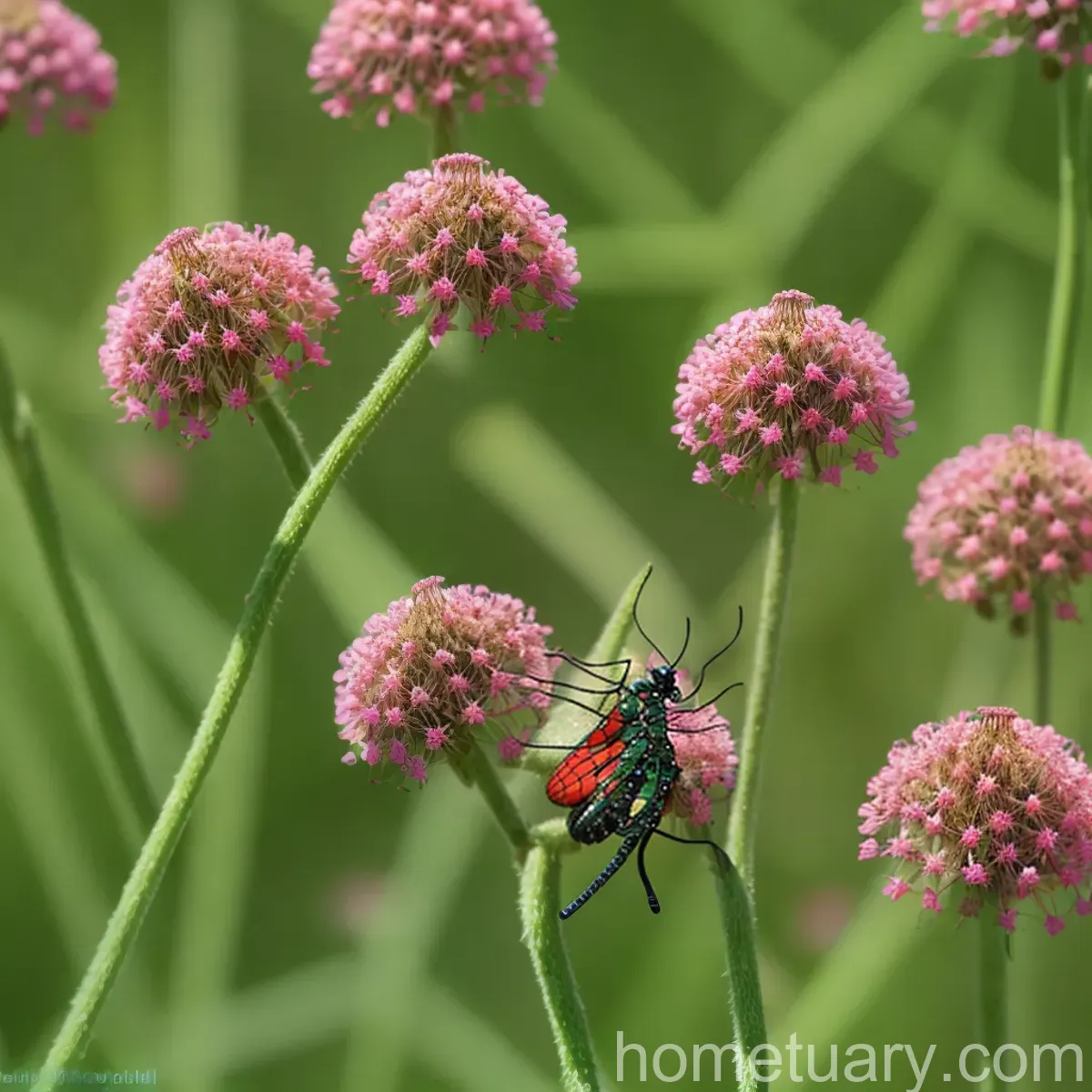Shasta Daisy (Leucanthemum x superbum ‘Starburst’): Cultivation, Care Tips, and Fun Facts
Shasta daisies are beloved by gardeners for their cheerful, white, and yellow blooms that brighten up any landscape. These perennial flowers, scientifically known as Leucanthemum x superbum ‘Starburst’, are known for their resilience and ability to thrive in various conditions. In this comprehensive guide, we will explore all aspects of Shasta daisy cultivation, including care tips, uses, propagation, common diseases, and much more. Let’s dive in and discover the beauty and versatility of the Shasta daisy.
What is a Shasta Daisy (Leucanthemum x superbum ‘Starburst’)?
The Shasta daisy, Leucanthemum x superbum ‘Starburst’, is a popular perennial plant that belongs to the Asteraceae family. It is a hybrid of several daisy species, resulting in a stunning flower that has become a staple in gardens, landscapes, and floral arrangements. The ‘Starburst’ variety is particularly notable for its large, showy blooms and vigorous growth habit.
Key Takeaways – Shasta Daisy (Leucanthemum x superbum ‘Starburst’)
Before delving deeper into the cultivation and care of Shasta daisies, let’s take a look at some key takeaways about this beautiful plant:
- Shasta daisies are perennial plants with striking white petals and vibrant yellow centers, creating a classic daisy appearance.
- Leucanthemum x superbum ‘Starburst’ is a specific variety known for its exceptionally large and abundant blooms.
- These daisies are versatile and can be used in various landscape settings, including borders, containers, and cutting gardens.
- Proper care involves providing well-drained soil, ample sunlight, and regular watering, along with occasional fertilization and maintenance.
Now that we understand the basics of Shasta daisies, let’s explore the specific aspects of their cultivation and care in detail.
Culture
Cultivating Shasta daisies requires an understanding of their preferred growing conditions, maintenance needs, and potential uses in landscapes and gardens. Let’s take a comprehensive look at the cultural aspects of Shasta daisies.
Uses
Shasta daisies offer a multitude of uses in garden and landscape design, as well as in the realm of cut flowers and floral arrangements. Here are some common uses of Shasta daisies:
- Garden Borders: They make excellent additions to garden borders, adding a touch of classic charm with their white blooms and bright centers.
- Cutting Gardens: Shasta daisies are frequently included in cutting gardens, as their long stems and prolific blooms make them ideal for fresh flower arrangements.
- Container Gardening: Compact and dwarf varieties of Shasta daisies are well-suited for container gardening, allowing individuals with limited space to enjoy their beauty.
- Wildlife Gardens: These daisies attract pollinators like bees and butterflies, making them valuable additions to wildlife-friendly gardens.
- Landscaping Focal Points: With their eye-catching flowers, Shasta daisies can be used as focal points in landscaping to draw attention and create visual interest.
Water
Proper watering is essential for the health and vigor of Shasta daisies. While they can withstand some drought once established, consistent moisture is beneficial, especially during the blooming season and hot, dry periods.
Here are some essential tips for watering Shasta daisies:
- Established Plants: Once established, Shasta daisies generally tolerate moderate drought. However, regular watering during dry spells can promote healthier and more abundant blooming.
- Newly Planted Daisies: Newly planted daisies require frequent watering to help them establish strong roots. Water deeply after planting and continue to provide consistent moisture until they show signs of robust growth.
Sunlight
Shasta daisies thrive in full sun to partial shade, with full sun being the ideal condition for prolific flowering and robust growth. When selecting a planting location, aim to provide them with at least 6 hours of direct sunlight per day for optimal performance.
Here are some key points to consider regarding sunlight requirements:
- Full Sun: Plant Shasta daisies in areas that receive ample sunlight, especially during the flowering season. Insufficient sunlight may result in reduced flowering and overall vigor.
- Partial Shade: While they prefer full sun, Shasta daisies can tolerate light shade, particularly in regions with hot summers. However, the number of blooms may be slightly reduced in shaded areas.
Fertilizer
Fertilizing Shasta daisies can promote healthy growth, lush foliage, and abundant flowering. However, it’s important to apply the right type of fertilizer at the appropriate times to avoid overstimulation or potential damage to the plants.
Here are some guidelines for fertilizing Shasta daisies:
- Timing: Apply a balanced, all-purpose fertilizer in early spring, just as new growth begins to emerge. Additionally, a light application of fertilizer in early summer can support blooming throughout the season.
- Application Method: Sprinkle a granular fertilizer around the base of the plants, following the manufacturer’s recommended rates. Water the area thoroughly after applying the fertilizer to aid in its absorption.
Soil
The soil condition plays a crucial role in the growth and overall health of Shasta daisies. They thrive in well-drained, moderately fertile soil with a slightly acidic to neutral pH level. Additionally, the soil composition directly impacts their ability to establish strong roots and produce an abundance of flowers.
Consider the following key points when preparing the soil for Shasta daisies:
- Drainage: Ensure that the planting site has good drainage to prevent waterlogging, which can lead to root rot and other moisture-related issues.
- Fertility: Amend the soil with organic matter, such as compost or well-rotted manure, to improve its fertility and structure. This enhances the soil’s ability to retain moisture while allowing excess water to drain away.
- pH Level: Conduct a soil test to determine the pH level, and make adjustments as necessary to maintain a slightly acidic to neutral pH, ideally between 6.0 and 7.0.
Pruning
Pruning Shasta daisies is an essential aspect of their maintenance, helping to encourage continuous blooming, shape the plants, and prevent self-seeding. Proper pruning techniques can contribute to the overall health and appearance of these perennial flowers.
Consider the following guidelines for pruning Shasta daisies:
- Deadheading: Regularly remove spent blooms by deadheading the flowers. This encourages the plants to produce new buds and prolongs the blooming period.
- Cutting Back: After the initial bloom cycle, consider cutting back the entire plant by one-third to promote a second flush of flowers later in the season.
Propagation
Propagating Shasta daisies allows gardeners to expand their plantings, share cuttings with others, or rejuvenate older clumps. This can be achieved through division or seed propagation, each with its own set of advantages and steps.
Here are the common methods of propagating Shasta daisies:
Division
- Timing: Divide established clumps in early spring or early fall, when they are not actively blooming and the weather is cooler.
- Process: Dig up the clump and carefully separate the individual root sections, making sure each division has several healthy shoots and roots attached. Replant the divisions immediately in prepared soil.
Seed Propagation
- Collection: Collect mature seeds from the spent flower heads after they have dried on the plants.
- Sowing: Sow the seeds in well-prepared seed trays or directly into the garden bed in late spring. Keep the soil consistently moist until the seeds germinate and the seedlings are well-established.
Container Popularity
The Shasta daisy’s popularity in container gardening stems from its compact growth habit, attractive blooms, and adaptability to container culture. By selecting the right variety and providing suitable care, gardeners can successfully grow Shasta daisies in containers, adding a touch of beauty and elegance to patios, balconies, and small gardens.
Here are some factors to consider when growing Shasta daisies in containers:
- Variety Selection: Choose compact or dwarf varieties of Shasta daisies that are well-suited for container cultivation, such as ‘Real Charmer’ or ‘Snow Lady’.
- Container Size: Use medium to large-sized containers to provide ample space for root development and stability for the plants. Ensure the containers have drainage holes to prevent waterlogging.
- Soil and Watering: Use a well-draining potting mix and maintain consistent moisture levels by watering the plants as needed, particularly during hot and dry periods.
- Sunlight: Position the containers in locations that receive at least 6 hours of sunlight per day to support healthy growth and abundant flowering.
Common Diseases
Like many plants, Shasta daisies are susceptible to certain diseases, particularly those related to moisture, air circulation, and soil conditions. Understanding the common diseases and their prevention is essential for maintaining the health and vigor of these beautiful flowers.
Here are some common diseases that may affect Shasta daisies:
Disease diagnosis
- Powdery Mildew: This fungal disease appears as a white, powdery substance on the leaves, often caused by high humidity and poor air circulation. Provide adequate spacing between plants and avoid overhead watering to reduce the risk of powdery mildew.
- Root Rot: Excessive moisture and poor drainage can lead to root rot, characterized by wilting, yellowing foliage, and stunted growth. Ensure proper drainage and avoid overwatering to prevent root rot.
- Gray Mold: Also known as Botrytis, this fungal disease causes gray, fuzzy growth on the stems and flowers, often in damp or humid conditions. Improve air circulation and remove affected plant material to control gray mold.
- Cercospora Leaf Spot: This foliar disease presents as dark brown or purple spots on the leaves and may result from overhead watering or high humidity. Minimize leaf wetness by watering at the base of the plants and promptly remove any infected foliage.
Understanding the symptoms and preventive measures for these diseases can help gardeners maintain healthy and thriving Shasta daisy plants.
Common Pests
Shasta daisies can face challenges from various pests, including insects and small mammals, which may feed on the foliage, flowers, or roots. Recognizing these pests and implementing appropriate control measures is crucial for protecting the plants and preserving their beauty.
Here are some common pests that may affect Shasta daisies:
- Aphids: These small, soft-bodied insects may cluster on the new growth and flower buds, sucking sap and causing distorted growth. Control aphids by rinsing the plants with water or using insecticidal soap as needed.
- Slugs and Snails: These mollusks may feed on the foliage and tender shoots, leaving behind ragged edges and holes in the leaves. Use physical barriers, traps, or slug and snail baits to manage their populations.
- Thrips: Thrips are tiny, slender insects that may cause stippling or silvery streaks on the leaves and flowers. Mitigate thrips infestations by removing affected plant parts and applying insecticidal soap as directed.
By monitoring for pest activity and implementing suitable management strategies, gardeners can minimize the impact of pests on their Shasta daisy plants.
Botanist’s Tips
As a botanist, I would like to share some expert tips for cultivating and caring for Shasta daisies based on their natural characteristics and growth requirements. These tips are designed to help gardeners achieve the best possible results when growing these beautiful perennial flowers.
Here are some botanist’s tips for Shasta daisy care:
- Healthy Soil Practices: Maintain well-drained, fertile soil enriched with organic matter, as it provides the foundation for strong root development and lush foliage.
- Adequate Spacing: Allow sufficient spacing between plants to maximize air circulation, reduce disease pressure, and promote healthy growth.
- Regular Deadheading: Stay proactive with deadheading to encourage continuous blooming and prevent the development of seed heads, which can inhibit further flowering.
- Mulching: Apply a layer of organic mulch around the base of the plants to conserve soil moisture, suppress weeds, and protect the roots during extreme temperatures.
- Seasonal Maintenance: Conduct seasonal maintenance tasks such as pruning, fertilizing, and dividing as needed to support the plants’ long-term health and performance.
By incorporating these tips into their gardening practices, individuals can enjoy thriving Shasta daisy plants that enhance their outdoor spaces and provide enduring beauty throughout the growing season.
Fun Facts
Exploring the fascinating world of Shasta daisies reveals intriguing facts that showcase the plant’s history, characteristics, and cultural significance. These fun facts offer a deeper appreciation for the beauty and allure of Shasta daisies and their enduring appeal to gardeners and flower enthusiasts.
Here are some fun facts about Shasta daisies:
- Culinary Uses: The petals of Shasta daisies are edible and can be used to garnish salads, desserts, and beverages, adding a whimsical touch to culinary creations.
- Medicinal Folklore: Historically, Shasta daisies have been associated with various medicinal uses in herbal folklore, including remedies for minor ailments and promoting general well-being.
- Symbolism: Shasta daisies symbolize purity, innocence, and new beginnings, making them popular choices for wedding bouquets and symbolic floral arrangements.
- Wildlife Attraction: The nectar-rich flowers of Shasta daisies attract beneficial pollinators like bees and butterflies, contributing to the overall biodiversity and ecological balance in gardens.
- Garden Therapy: Engaging in gardening tasks involving Shasta daisies can provide therapeutic benefits, promoting relaxation, stress reduction, and a sense of connection to nature.
These fun facts highlight the multifaceted nature of Shasta daisies and their broader cultural and ecological significance, enriching the experience of cultivating and enjoying these beloved flowers.
Links to External Resources
To further delve into the world of Shasta daisies, here are some recommended resources for additional information, expert insights, and inspiration:
- The American Daisy Society: Explore the official website of the American Daisy Society to discover extensive resources on daisies, including Shasta daisies.
- Royal Horticultural Society (RHS) – Shasta Daisies: Access the RHS website for valuable guidance on growing and caring for Shasta daisies, along with detailed plant profiles.
- University of Florida IFAS Extension – Growing Daisies: Visit the University of Florida IFAS Extension for specific information on cultivating daisies, including Shasta daisies, in Florida and beyond.
With these resources, gardeners can expand their knowledge, gather practical tips, and immerse themselves in the captivating world of Shasta daisies.
As we conclude our exploration of Shasta daisies (Leucanthemum x superbum ‘Starburst’), I hope this comprehensive guide has provided valuable insights and practical advice for cultivating these beautiful perennial flowers. From cultural considerations to expert tips and fun facts, Shasta daisies continue to captivate enthusiasts with their timeless charm and enduring appeal. Happy gardening!
In conclusion, the Shasta daisy stands as an emblem of vibrancy and elegance, gracing landscapes and gardens with its stunning blooms. Embracing its versatile nature and understanding its cultural significance adds to the allure of tending to these perennial beauties. With proper care, attention to detail, and a touch of creativity, Shasta daisies flourish as timeless icons in the world of horticulture, leaving a lasting impression on those who pause to admire their natural splendor.

Note: The information provided in this article is intended for educational and informational purposes only. It is crucial to research and consider specific regional conditions and individual plant requirements when cultivating Shasta daisies or any other plants. Always consult with local horticultural experts for tailored recommendations and best practices.
References
- “Leucanthemum x Superbum ‘Starburst’ – Shasta Daisy”, University of Maryland Extension, Link
- “Shasta Daisy”, University of Florida IFAS Extension, Link
- “Leucanthemum x Superbum ‘Starburst'”, Royal Horticultural Society (RHS), Link
- “Shasta Daisy – Leucanthemum x superbum”, The Garden Helper, Link
- “Common Diseases of Shasta Daisy”, NCSU Plant Disease and Insect Clinic, Link




